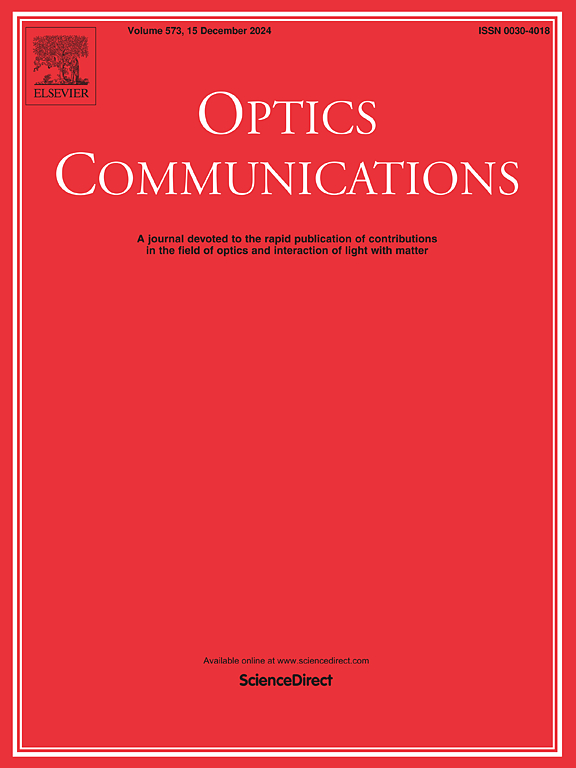Advancing optomechanical sensing: Novel CMOS-compatible plasmonic pressure sensor with Silicon-Insulator-Silicon waveguide configuration
IF 2.2
3区 物理与天体物理
Q2 OPTICS
引用次数: 0
Abstract
This article introduces a novel Complementary Metal Oxide Semiconductor (CMOS) compatible plasmonic optical pressure sensor featuring a Silicon-Insulator-Silicon (SIS) waveguide configuration. The sensor design incorporates a railtrack resonator coupled to a straight waveguide with gratings, further enhanced by embedding silicon nanorods into the waveguide and resonator cavity. Finite element method (FEM) was used to perform numerical investigation and evaluate the performance of our sensor. The proposed sensor exhibits a pressure sensitivity of 51.075 nm/MPa, surpassing that of previous silver-based sensors and showcasing the potential of silicon in plasmonic sensing applications. Moreover, this work represents the first instance of employing CMOS-compatible silicon for designing an optical pressure sensor, thereby bridging the gap between plasmonic optomechanical sensors and nanoelectronics while circumventing the compatibility issues typically associated with metals in standard CMOS fabrication processes. By leveraging silicon as a plasmonic material, we have effectively addressed the constraints, such as lack of tunability and poor optical and thermal stability, that are suffered by traditional metal-based sensors. Moreover, building upon the recent advancements in silicon photonics, the need for setting up new manufacturing infrastructures for novel materials, such as transition metal nitrides, is overcome by the use of silicon due to the well-established fabrication facility of the silicon industry. The sensor’s versatility and impact across diverse domains are highlighted by its potential applications, including gas leakage detection, flow rate measurement and refractive index sensing for early diagnosis of organ rejection post-transplantation.

求助全文
约1分钟内获得全文
求助全文
来源期刊

Optics Communications
物理-光学
CiteScore
5.10
自引率
8.30%
发文量
681
审稿时长
38 days
期刊介绍:
Optics Communications invites original and timely contributions containing new results in various fields of optics and photonics. The journal considers theoretical and experimental research in areas ranging from the fundamental properties of light to technological applications. Topics covered include classical and quantum optics, optical physics and light-matter interactions, lasers, imaging, guided-wave optics and optical information processing. Manuscripts should offer clear evidence of novelty and significance. Papers concentrating on mathematical and computational issues, with limited connection to optics, are not suitable for publication in the Journal. Similarly, small technical advances, or papers concerned only with engineering applications or issues of materials science fall outside the journal scope.
 求助内容:
求助内容: 应助结果提醒方式:
应助结果提醒方式:


